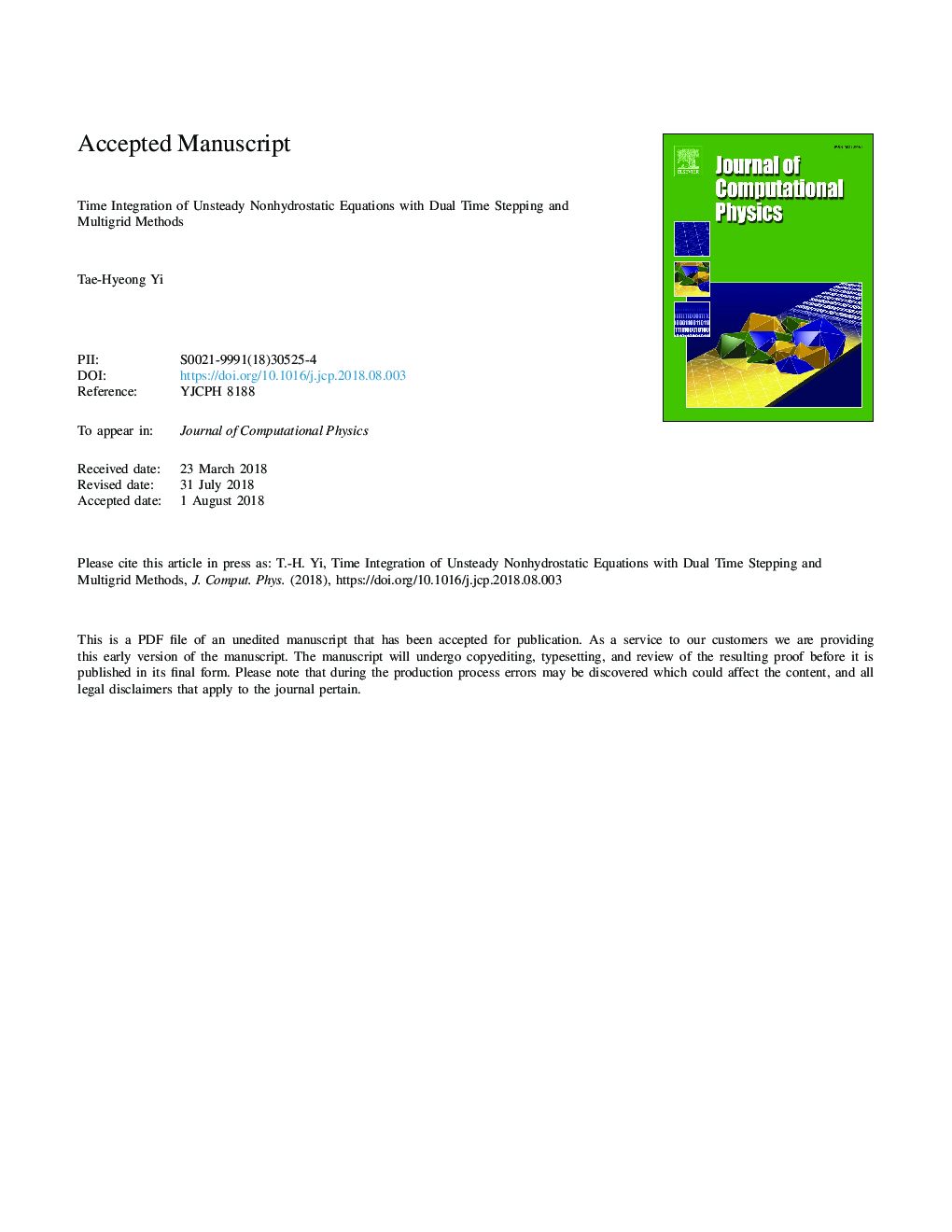| کد مقاله | کد نشریه | سال انتشار | مقاله انگلیسی | نسخه تمام متن |
|---|---|---|---|---|
| 11002775 | 1449339 | 2018 | 37 صفحه PDF | دانلود رایگان |
عنوان انگلیسی مقاله ISI
Time integration of unsteady nonhydrostatic equations with dual time stepping and multigrid methods
ترجمه فارسی عنوان
یکپارچه سازی زمان معادلات غیر هیدرواستاتیک غیرمتعارف با روش های دو مرحلهای و چند گری
دانلود مقاله + سفارش ترجمه
دانلود مقاله ISI انگلیسی
رایگان برای ایرانیان
کلمات کلیدی
موضوعات مرتبط
مهندسی و علوم پایه
مهندسی کامپیوتر
نرم افزارهای علوم کامپیوتر
چکیده انگلیسی
A time integration method based on dual time stepping coupled with a multigrid and implicit iterative solver is discussed for overcoming the temporal stiffness associated with modeling unsteady atmospheric flows. Adopting the dual time stepping allows solving an unsteady flow problem as a steady-state one by introducing a pseudo-time derivative into the governing equations. Consequently, the model uses a large time step and leads to a reduction in computational time. In the framework of the dual time stepping, a full approximation storage multigrid and lower-upper symmetric Gauss-Seidel implicit solver are employed to accelerate convergence in a structured, quadrilateral grid. The discretization of a physical-time derivative is based on a second-order backward differentiation formula or a family of singly diagonally implicit Runge-Kutta methods. The spatial terms of nonhydrostatic equations are discretized with a second-order Roe scheme in the finite volume method. To assess the performance of the model in terms of accuracy and efficiency, which are indicated by the normalized error norms and wall-clock time, respectively, three idealized tests are performed with the unsteady flow problems of isentropic vortex, rising thermal bubble and inertia-gravity waves. The results of numerical experiments consistently demonstrate that the dual time stepping coupled with explicit-first, singly diagonally implicit Runge-Kutta and multigrid methods is more efficient than the three-stage, third-order explicit Runge-Kutta method with comparable accuracy. The numerical experiment also indicates that the dual time stepping is more efficient when a stretched grid is employed. The efficiency in the framework of the dual time stepping is dependent on various numerical factors, including a multigrid level and cycle, Butcher coefficients, an implicit solver and a physical-time step.
ناشر
Database: Elsevier - ScienceDirect (ساینس دایرکت)
Journal: Journal of Computational Physics - Volume 374, 1 December 2018, Pages 873-892
Journal: Journal of Computational Physics - Volume 374, 1 December 2018, Pages 873-892
نویسندگان
Tae-Hyeong Yi,
